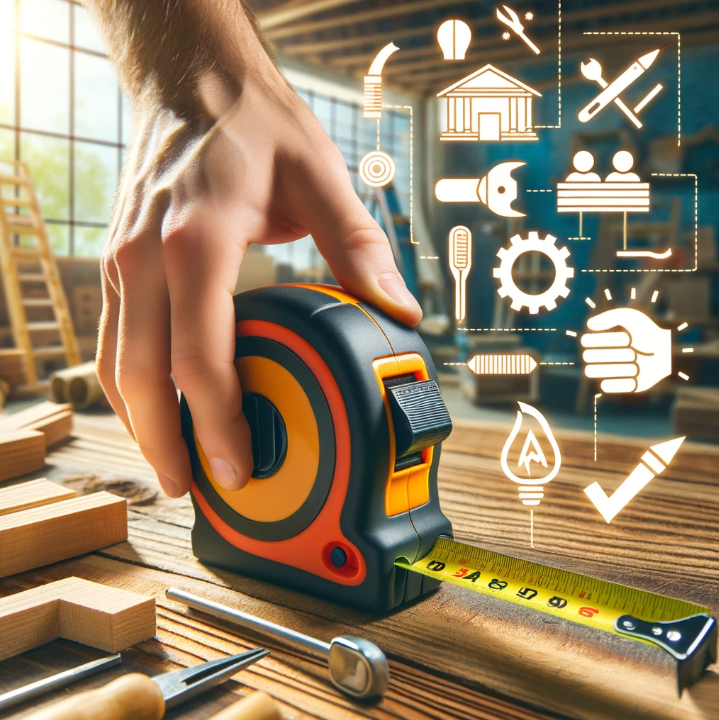Taming the tape measure unlocks doors to DIY dreams and crafting triumphs. But even seasoned handymen and meticulous makers can fall prey to measuring mistakes. Don’t let these common blunders derail your projects! Embrace this guide, identify potential pitfalls, and transform yourself into a measurement master.
Keywords: common tape measure mistakes, avoid tape measure errors, accurate measurements, DIY tips and tricks, tape measure guide
1. Hook Mishap: Starting your measurement at the wrong spot? The culprit might be a misplaced hook! Ensure the hook is securely anchored at the exact beginning of your measurement point. Every millimeter counts!
2. Inch-ing Towards Error: Don’t rely solely on the big, bold numbers! Those tiny lines between inches represent crucial fractions. Learn how your tape measure displays fractions (halves, quarters, eighths, etc.) and factor them into your measurement.
3. Stretching the Truth: Avoid the temptation to stretch the tape measure for that “perfect” fit. It might seem harmless, but even slight stretching leads to inaccurate readings and project inconsistencies. Keep it taut and honest!
4. Parallax Peril: Reading the measurement at an angle creates parallax error, leading to misinterpretations. Always hold your head directly above the measurement for clear, accurate readings.
5. Rounding Roulette: While rounding small fractions might seem convenient, it can snowball into significant errors over multiple measurements. Add up all fractions meticulously for precise results.
6. Internal Inconvenience: Measuring inside corners? Don’t contort yourself or guesstimate! Utilize the “pencil trick”: hook the tape measure onto a pencil, hold it taut against both sides, and read the measurement for accurate results.
7. Circle Conundrum: Circumference calculations can be tricky! Wrap the tape measure snugly around the object, but don’t forget to divide the measurement by pi (3.14) to get the diameter. Remember, pi is roughly 3.14, but use a more precise value for critical measurements.
8. Temperature Trouble: Extreme temperatures can affect tape measure accuracy. If possible, measure in controlled environments or consider temperature corrections for very precise work. Metal tapes are more susceptible to temperature changes than plastic ones.
9. Calibration Catastrophe: Over time, even high-quality tapes can lose accuracy. Regularly check your tape measure against a known reference tool and mark any discrepancies for future adjustments.
10. Practice Makes Perfect: Don’t be discouraged by initial stumbles! The more you use your tape measure and practice these tips, the more comfortable and accurate you’ll become. Confidence is key to mastering those measurements!
Bonus Tip: Invest in a quality tape measure with clear markings and a comfortable grip. It makes the measuring process smoother and more enjoyable, reducing the risk of errors.
Your Trusted Tool: Maintaining and Calibrating
Your trusty tape measure is more than just a tool;...
Read MoreFinding Your Perfect Partner: Choosing the
Whether you’re a seasoned DIYer or a crafting enthusiast embarking...
Read MoreConquering the Darkness: Reading Tape Measures
Dim lighting shouldn’t dim your DIY dreams! Measuring accurately in...
Read MoreBeyond the Basics: Advanced Techniques for
Mastering the fundamentals of reading a tape measure is essential...
Read MoreMastering Tape Measure Readings: A Beginner’s
Feeling intimidated by that jumble of lines on your tape...
Read MoreConquer Your DIY Dreams: Mastering Tape
Unleash your inner handyman (or handywoman!) with the essential guide...
Read More





